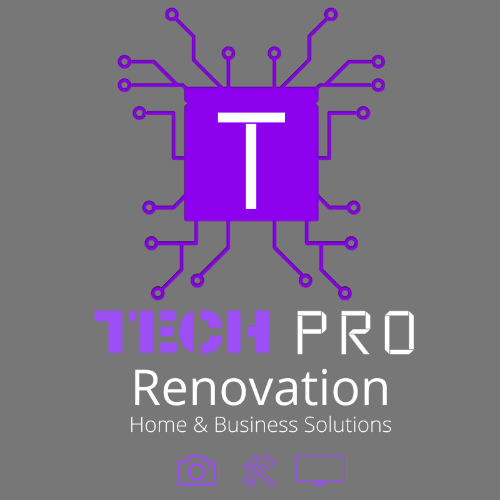12 Energy-Efficient Upgrades

Here is a breakdown of each of the energy-efficient upgrades, along with instructions for implementing them:
- Energy-Efficient Appliances:High-Efficiency Appliances: When shopping for appliances like refrigerators, dishwashers, and washing machines, look for models with the ENERGY STAR label. These appliances are designed to use less energy without compromising performance.
Instructions: Research and compare ENERGY STAR-rated appliances before making a purchase. Look for appliances with advanced energy-saving features such as variable-speed motors and sensors that adjust operation based on load. - Windows and Doors:Double or Triple-Pane Windows: Replace old single-pane windows with double or triple-pane windows. Choose windows with Low-E coatings for better insulation and UV protection.
Instructions: Consult with a professional to assess your window needs. Select windows that match your home's architectural style and climate. Ensure proper installation to maximize efficiency. - Insulation:Wall, Attic, and Crawl Space Insulation: Inspect your home's insulation. Add or upgrade insulation as needed. Use materials like fiberglass, cellulose, or spray foam for effective thermal resistance.
Instructions: Identify areas with inadequate insulation and consider hiring a professional to install insulation correctly. Focus on attics, walls, and crawl spaces to create a well-insulated envelope. - Lighting:LED Bulbs: Replace incandescent and CFL bulbs with LED bulbs. LED bulbs use less energy, emit less heat, and last longer.
Instructions: Replace bulbs gradually as they burn out. Consider purchasing LED bulbs with warm white or daylight color temperatures based on your lighting preferences. - Solar Panels:Photovoltaic Solar Panels: Consult with a solar panel installation company to assess your home's solar potential. Determine the number of panels needed and their optimal placement.
Instructions: Work with professionals to design and install a solar panel system tailored to your energy needs and available roof space. Check local regulations and incentives for solar installations. - HVAC Systems:High-Efficiency Furnaces and Boilers: Hire an HVAC professional to assess your heating needs. Replace older, less efficient systems with high-efficiency models.
Instructions: Choose an HVAC system with a high AFUE (Annual Fuel Utilization Efficiency) rating for furnaces or a high SEER (Seasonal Energy Efficiency Ratio) rating for air conditioners and heat pumps. - Water-Saving Fixtures:Low-Flow Fixtures: Replace faucets, showerheads, and toilets with low-flow models. Follow manufacturer instructions for installation.
Instructions: Turn off water supply before installation. Use plumber's tape to ensure proper sealing and prevent leaks. Adjust water pressure as needed for optimal flow. - Sealing and Insulating Ducts:Duct Sealing: Identify leaks in your ductwork using tools like duct tape or mastic sealant. Seal gaps and joints to prevent air leakage.
Instructions: Use mastic sealant or foil tape to seal joints and seams. Pay attention to connections at vents and registers. Consider hiring professionals for thorough duct sealing. - Reflective Roofing Materials:Cool Roofing Installation: If replacing your roof, consider installing cool roofing materials like reflective shingles or tiles. Consult with roofing professionals for recommendations.
Instructions: Work with a roofing contractor experienced in cool roofing installation. Choose materials that meet local building codes and offer reflective properties. - Window Treatments:Shades and Blinds: Install window treatments such as shades, blinds, or curtains. Close them during hot days to block out sunlight and heat.
Instructions: Measure windows accurately and choose treatments that fit well. Opt for light-colored treatments that reflect sunlight. Close treatments during the hottest parts of the day. - Smart Home Systems:Smart Thermostats: Purchase a smart thermostat compatible with your HVAC system. Follow installation instructions to connect and configure the device.
Instructions: Turn off power to your HVAC system before installation. Follow step-by-step instructions for wiring and setup. Connect the thermostat to your home's Wi-Fi network. - Energy-Efficient Landscaping:Strategic Planting: Identify areas where shade is needed, such as near windows and walls that receive direct sunlight. Choose trees and shrubs that grow well in your climate.
Instructions: Research local native plants that require less water. Plant trees to provide shade to the west and south sides of your home. Allow proper spacing for growth.
Remember that for major projects such as solar panel installation, roof replacement, and HVAC system upgrades, it's advisable to work with professionals who are experienced in those areas. They can provide expert guidance and ensure the installations are done correctly and safely.
Contact Us
We're Here for You
Have a question or need assistance? We're here to help! Don't hesitate to reach out to us with any inquiries you may have. Feel free to contact us, and our dedicated team will be more than happy to provide you with the answers you're looking for. Click send message.

